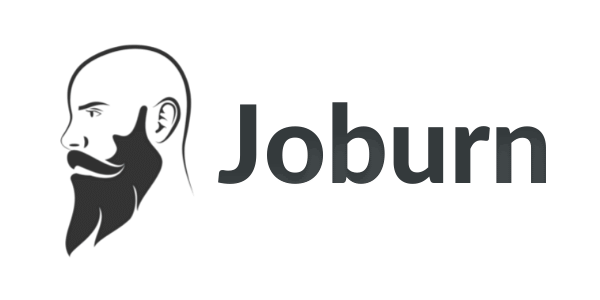A sales proposal is an essential tool for any salesperson, as it allows them to clearly communicate the value of their products or services and persuade potential customers to make a purchase.
What is sales proposal?
A sales proposal is a document that outlines a proposed sales agreement between a business and a potential customer. It typically includes information about the products or services being offered, the terms of the sale, and the benefits of doing business with the company.
What is an example of sales proposal?
An example of a sales proposal could be a proposal from a software company to a potential client, outlining the features and benefits of their CRM software, pricing information, and a proposed implementation plan.
What is the importance of sales proposal?
The importance of a sales proposal is that it allows a business to clearly communicate the value of their products or services to a potential customer. A well-written proposal can help to secure new business and increase revenue for a company. Additionally, it can help to build trust and establish a professional relationship with a potential customer.
What is the benefit of sales proposal?
The benefits of a sales proposal include:
- Clearly communicating the value of a product or service to a potential customer
- Helping to secure new business and increase revenue for a company
- Building trust and establishing a professional relationship with a potential customer
- Providing a detailed plan for how the product or service will be implemented
- Outlining the terms and conditions of the sale
What are the sales proposal methods?
There are several methods for creating a sales proposal, including:
- Face-to-face presentations: This method involves meeting with a potential customer in person to present the proposal.
- Phone or video calls: This method involves presenting the proposal over the phone or video conference.
- Email or mail: This method involves sending the proposal to the potential customer via email or mail.
What are the steps of sales proposal?
The steps of creating a sales proposal typically include:
- Researching the potential customer and their needs
- Outlining the products or services being offered and their benefits
- Providing pricing information and payment terms
- Presenting a plan for how the product or service will be implemented
- Including any necessary supporting documents, such as references or case studies
- Proofreading and editing the proposal
- Presenting the proposal to the potential customer.
What are the types of sales proposal questions?
Types of sales proposal questions: Some common types of questions that may be included in a sales proposal include:
- Questions about the potential customer’s current situation and their specific needs
- Questions about their budget and resources available for the project
- Questions about their decision-making process and timeline
- Questions about their current providers and what they like and dislike about them
- Questions about their expectations and goals for the project
- Questions about the process for evaluating different solutions and vendors
What is sales proposal strategy?
A sales proposal strategy is a plan for how to effectively communicate the value of a product or service to a potential customer. It may involve researching the customer and their needs, developing a compelling argument for the product or service, and presenting the proposal in a clear and professional manner.
What is pre-proposal in sales?
A pre-proposal is a preliminary document that is used to introduce a business or product to a potential customer before a formal proposal is developed. It may include information about the company, a general overview of the product or service, and an invitation for the customer to continue the conversation.
What is sales proposal skill?
Sales proposal skill is the ability to effectively communicate the value of a product or service to a potential customer, and to persuade them to make a purchase. This may include skills such as research and analysis, effective communication, and the ability to build rapport and establish trust with potential customers.
How to propose in sales
- Research the customer and their specific needs
- Tailor the proposal to address those needs and demonstrate how your product or service can meet them.
- Highlight the unique selling points of your product or service and how it stands out from competitors
- Use persuasive language, statistics and case studies to support your claims
- Include pricing and payment terms in the proposal
- Offer a clear implementation plan and timeline
- Be prepared to answer any questions or concerns the customer might have
- Follow up with the customer after the proposal to gauge their interest and answer any additional questions they might have.
How to learn sales proposing
- Read books and articles on sales and proposal writing
- Take courses or attend workshops on sales and proposal writing
- Look for guidance from more experienced salespeople in your organization
- Practice writing proposals using different scenarios and customer types
- Get feedback from others on your proposals to see where improvements can be made
- Seek out mentorship or coaching from a seasoned sales professional.
How do you measure sales proposal?
- Track the number of proposals sent out and the number of proposals that result in sales
- Measure the conversion rate of proposals to sales
- Track the time it takes to close a sale after a proposal is submitted
- Analyze customer feedback on the proposal
- Measure the win rate of proposals compared to competitors
- Track the return on investment (ROI) of projects that result from proposals.
What is sales proposal target?
A sales proposal target is a specific goal or objective that a business wants to achieve through the sales proposal process. This could include a specific number of proposals to be sent out, a specific conversion rate of proposals to sales, or a specific revenue target to be reached through the sales of the proposed products or services.
What is sales proposal metrics?
Sales proposal metrics are measurable indicators that can be used to track the effectiveness of the sales proposal process. These may include metrics such as the number of proposals sent out, the conversion rate of proposals to sales, the average time it takes to close a sale after a proposal is submitted, and the win rate of proposals compared to competitors.
What is sales proposal KPIs?
Sales proposal KPIs (Key Performance Indicators) are specific metrics that are chosen to evaluate the performance of the sales proposal process and the effectiveness of the strategy. Examples of KPIs for sales proposals could include the number of qualified leads generated from proposals, the win rate of proposals, the time to close a sale after a proposal is submitted, the return on investment (ROI) of projects resulting from proposals, and customer satisfaction with the proposal process. These KPIs can be used to measure the performance of the sales proposal process and to determine areas for improvement.
What are characteristics of a good prospect?
A good prospect is a potential customer who is likely to be interested in your product or service and has the ability to make a purchase. Some characteristics of a good prospect may include:
- They have a need or problem that your product or service can solve
- They have the budget and authority to make a purchase
- They are in the right industry or market segment
- They are in a growth phase or have plans to expand their business
- They have a positive attitude and are open to new solutions
What is the most effective way of prospecting?
The most effective way of prospecting will vary depending on your product, service and target market. Some common methods of prospecting include:
- Referral marketing: Leveraging existing customers and networks to identify potential prospects.
- Networking: Building relationships with people in your industry, community or alumni groups.
- Cold calling: Reaching out to potential prospects directly by phone or email.
- Content marketing: Creating and sharing valuable content to attract potential prospects to your website or social media channels.
- Trade shows and events: Attend industry-related events to meet potential prospects in person.
- Advertising: Using online or offline ads to reach potential prospects.
- Database mining: Analyzing and segmenting data from existing customers to identify potential prospects with similar characteristics.
What is a typical sales process?
A typical sales process is a series of steps that a salesperson follows in order to close a sale. The process can vary depending on the company and the product or service being sold, but a general outline of the sales process is as follows:
- Prospecting: Identifying and qualifying potential customers.
- Approach: Making initial contact with potential customers.
- Presentation: Demonstrating the features and benefits of the product or service.
- Handling objections: Addressing any concerns or questions that the customer may have.
- Closing: Asking for the sale and finalizing the transaction.
- Follow-up: Following up with the customer after the sale to ensure satisfaction and to identify upselling opportunities.
What is a sales proposal checklist?
A sales proposal checklist is a document that outlines the key elements that should be included in a sales proposal. The checklist can vary depending on the company and the product or service being sold, but a typical sales proposal checklist may include:
- Introduction: A brief overview of the company and the product or service being offered
- Problem statement: An explanation of the problem or need that the product or service addresses
- Solution: A detailed description of the proposed solution, including features, benefits and pricing
- Testimonials: Quotes or references from existing customers
- Implementation plan: A detailed plan for how the product or service will be implemented
- Terms and conditions: A summary of the terms and conditions of the sale
- Next steps: A call to action and next steps for the customer to take.

